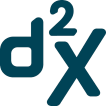Setting up a project portfolio
One of the first consequences for the IS manager is the difficulty in collecting homogeneous information that enables him to control his project portfolio and thus manage the capacity of his teams.
You will therefore have understood the many advantages of implementing a project portfolio management tool.
Among the main ones, we find:
- Control of the project portfolio (but also of non-project activities such as operational readiness and functional support, depending on the company's organisation),
- Standardisation and centralisation of information,
- The organisation and planning of the team's activity and consequently of the capacity to do,
- The visibility of the alignment of the project roadmap with the company's medium-term master plan (2 to 4 year vision),
- Automating the production of predefined reports (progress dashboard, project sheet, weekly flash report, etc.) while avoiding the need to multiply information collection media,
- The provision of factual information to facilitate decision-making (prioritisation, arbitration, etc.),
- The identification of discrepancies between planning and execution,
- Better control of the budget, of the remaining work to be done and of the value acquired,
- The possibility of steering major projects by risk and monitoring the associated action plans.
Before embarking on the creation of this portfolio, standardisation work must be carried out. This phase should not be neglected, as it involves determining the reference vocabulary to be used by all those involved.
It is then necessary to (re)define the bases of a project methodology common to all stakeholders by identifying:
- The key phases of a projet
- For example: opportunity, launch, preparation, implementation, acceptance, production launch and finalisation.
- The "must-have" deliverables that must be produced during these 7 phases,
- The criteria for passing the 7 major milestones.
Last but not least, the inventory of all the information that will have to be collected for the tool to work...
TO BE CONTINUED!
